The commerce platform Shopify has achieved tremendous growth in just three years after starting life as a small business. It exceeded $7 billion in gross merchandise volume and currently has over 150,000 store owners.
One of Shopify’s e-commerce platform founders, Tobias Lutke, became dissatisfied with existing e-commerce platform solutions. Together with co-founders Daniel Weinand and Scott Lake, he created the storefront site.
To create a spectacular company or small business, you have to be dissatisfied with what competitors are doing and see what’s possible.
Paul Zane Pitzer may have been right, when he said that you should “start your own small business when you’re an unsatisfied customer.”
The importance of great customer support can never be over-emphasized. It’s true that 96% of unhappy customers won’t complain, yet over 90% of those dissatisfied customers won’t return. On the other hand, exquisite customer support and a great customer experience builds loyalty. This is very important for ecommerce platforms.
Shopify knows that poor customer experiences spread like wildfire and can eventually kill a business especially as a commerce platform. That’s why they put customer support at the forefront of everything that they do when it comes to being an ecommerce website.
With that said, let’s look at the five strategies that helped Shopify grow as a successful ecommerce business 10X in three years:
Strategy #1: Growth Hack
Craig Miller, Chief Marketing Officer at the e-commerce platform Shopify, believes that you should replace the word “marketing” with “growth.”
Growth hacking is all about looking for creative ways to use technology to acquire happy customers to a product, all in service of growth.
A growth hacker is a person whose true north is growth. Everything they do is engineered to produce scalable growth. – Sean Ellis
If your daily activities don’t lead to small business growth, then you’re not growth hacking.
After six months promoting Hotmail’s web-based email system, developers Sabeer Bhatia and Jack Smith had generated their first million users. Within 17 months, they grew to 12 million users – and sold the software to Microsoft.
Growth hacking as a strategy was first introduced by Sean Ellis, founder of Qualaroo and GrowthHackers.com. He explained it using a pyramid:
How did the e-commerce platform Shopify growth hack their way to over 150,000 store owners? They allowed users to build their first online retailer store without paying a dime for 14 days.
Shopify’s free trial provides all of the features that a typical commerce platform builder should have.
But here is the deal: At the end of that free trial period, it’s almost impossible for users to let their small business e-commerce sites shut down.
They’ve typically put in lots of work to grow their small business, sourcing products, making their first few sales and improving search rankings for popular keywords.
The free trial is a popular growth hack and great ecommerce solution. According to VWO, GetResponse increased its conversions by 158%, by adding a “Try GetResponse – FREE for 30 days” call-to-action button on their homepage.
Surge Lab found that BigContacts increased visits to their Free Trial sign-up page by 56%. And, they intend to continue testing to determine the right CTA for their target audience, says Bob Walton, founder of Big Contacts.
So many SaaS companies are utilizing “free-trial” call-to-action to improve their customer acquisition. Conversion rate optimization has gone beyond testing the wordings on your CTA button. You also have to test colors, positioning and style (e.g., curved edges versus sharp edges).
Freshbooks also uses a “free trial” CTA to prompt users to try its product risk-free. If they don’t like it for any reason, they’re under no obligation to continue.
Although the “free trial” strategy works well for SaaS (software as a service) companies and app developers, it may not work for every business.
However, if you’re an information product owner, content marketer or blogger, you can still growth hack by letting customers have a taste of your premium product.
If you’re an author, you could give away free chapters of your book and include a call-to-action to buy the full copy at the end. Or, you could give away an audio version, so that people can listen to it while driving.
Offering sample chapters can increase book sales and success for your small business. That’s exactly what Nathan Barry does with his book The App Design Handbook.
A typical example of growth hacking for authors is Amazon’s “preview” feature, allowing buyers to preview the first few pages of any book. Smart authors will have a strong opening that persuades readers to place an order.
Michael Stelzner also gives away a free chapter of his book, Launch, which has generated over 100 reviews on Amazon, so far.
What if you’re selling an online course, instead of a book?
Well, learn from Guillermo Ziegler. He used Derek Halpern’s ZippyCourses to offer a free online course to his readers. That, in turn, added over 1,700 qualified prospects to his email list.
Strategy #2: Focus on Small Wins and Scalability
I strongly believe that anyone can start an online business from scratch and start earning $100,000 within a year, if they focus on small wins and then scale or expand from there. After all, as a commerce platform- Shopify didn’t start out with thousands of users.
As they began delivering a top-notch user experience with great customer support, positive word-of-mouth brought in more users to the ecommerce website.
That’s how to grow a successful business. Set a big goal, but have plans in place to help you reach that goal with baby steps. According to Daniel Goleman, “small wins” add up to success and, eventually, to big results.
For example, if you want 20,000 search visitors per month to your ecommerce website or small business, break down that number into a daily goal.
20,000 divided by 30 days = 666.67 visitors/day
Focusing on 667 visitors each day is an easier – and more interesting – journey. By writing guest posts on authority blogs and consistently publishing in-depth articles at least once a week, you’ll hit your goal in time – one day at a time.
Getting a prospect’s email address is a small win that can translate into a meaningful transaction, when you establish and nurture a relationship.
In your own online or small business, you can focus on small wins, by understanding the processes that led to any small result that you got. Then, you can repeat and increase your efforts to increase your gains.
If you’re a blogger and people are leaving comments, but not buying from you, take heart. The very fact they left a valuable comment means that they’re interested in what you’re saying.
Maybe you just need to relate with them more and improve their experience. They’ll come back, hand over their email address, and eventually slap their credit card on the table and buy from you.
Marie Forleo has irresistible charisma. She’s also focused on small wins that stem from answering reader questions every Tuesday.
Jonah Berger, a New York Times bestselling author, also focuses on small wins with his books. In his posts, he takes a single idea and expands it with new insights or approaches it from a unique angle.
Strategy #3: Use Analytics to Get Customer Insights
When customers share their story, they’re not just sharing pain points. They’re actually teaching you how to make your product, service and business better. Your customer service organization should be designed to efficiently communicate those issues. – Kristin Smaby, “Being Human is Good Business”
Does your small business have a system to determine what customers think about products and services? Getting customer insights is crucial for growing any small business.
The English author Lewis Carroll once said that “if you don’t know where you’re going, any road will get you there.” This is true of both life and business.
You’ve got to tap into the analytics of your customers, to gain crucial insights into what they’re searching for, so that you can meet their needs.
You can use an omni-channel strategy for gathering customer insights, such as sending questionnaires, one-on-one interviews, phone calls, email marketing, apps, SMS, chat and so on. Don’t forget social media monitoring on the major platforms (Facebook, LinkedIn, Instagram, and YouTube).
As a commerce platform Shopify provides an essential ecommerce website solution. But, until they gained customer insight regarding their product, it didn’t grow. Once they acquired customer data, they translated it into action and saw results.
The e-commerce platform Shopify also uses customer data in its content. After interviewing ecommerce platform owners, they’ll publish the questions and answers on a special page, tagged “success stories.”
Here’s an excerpt from the success story above. Notice how the question was phrased and the response from Greats’ Founder:
The ecommerce website Shopify may be excited with the results that their customers are getting, but they also understand their needs, because they’ve been there, too. They remember when they struggled to attract customers as an ecommerce website.
JCPenney struggled for a long time to attract customers to its online store. In 2012, it recorded a fourth-quarter loss of $427 million. Sales had declined by 28%, from the previous year.
The loss was significant. Take a look at the profit drop:
They continually altered their pricing and then blatantly removed the one feature that gave them competitive advantage: their sale pricing. It wasn’t long before customers abandoned the store completely before even getting to the payment gateway.
Everything boils down to customer service. If you operate a restaurant, unhappy customers won’t come back for another meal.
Then – after two years of massive losses – JCPenney turned things around. Share value increased by 16.1% and they’re expected to earn close to $2 billion by the end of the year.
Here are some of the ways that you can use analytics to gather valuable data from your target audience:
1). Check live keywords: According to HubSpot, 44% of online shoppers looking for specific brands will start the purchasing process with a keyword search.
To the customers, the search engine is a tool for getting the right information about a particular product.
These keywords are of great importance to the customers. If you can identify and optimize your content around these terms, you’ll start ranking highly in Google, especially when you focus on user intent.
Live keywords are search terms that customers are currently typing into Google. If they fail to get the information they’re looking for, they’ll come back the next day with the same search queries.
You need to track the live keywords that your web pages are ranking for in the search engines. These live key phrases that are sending customers to your site can tell you what the customer’s intent is — for example, whether they’re researching or are ready to buy.
Follow these few steps to find live keywords:
Step #1: Visit SEMrush. Plug in your site URL and click the green “search” button. My example uses dodocase.com.
Step #2: Analyze your live keywords. Scroll down the results page and you’ll find the keywords that you’re ranking for. (You can also use a competitor’s URL to do the same analysis.)
Here are the live keywords that Dodocase’s customers are using:
So, if you owned Dodocase, you’d know that your customers are searching these keywords every day. You wouldn’t have to reinvent the wheel. Instead, you could just create more and better product reviews around these keywords that are already profitable.
Don’t try to manipulate rankings, but instead focus on creating a better user experience with your website that will help you attract and retain customers.
2). Know your competitors: Competitive auditing is another method of gaining customer insights.
After all, if customers aren’t on your site, then they’re somewhere else – most likely, your competitors. With very little effort, you can pinpoint their strategies and outsmart them.
For instance, ecommerce website Shopify is not the only shopping cart/online store-builder solution. Their top rivals when it comes to other e-commerce platforms include Bigcommerce and Volusion.
Using competitive intelligence, you can analyze every step that your competitors take. Just follow these simple steps:
Step #1: Visit Similarsites.com. On the homepage, plug your site URL into the box. Hit “enter” or click the search icon.
Step #2: Check similar sites that offer the same products and services. Learning how they grew and what you can do better for your small business is key.
Every big and small business should monitor what its competitors are doing. If you run an online store, you save time and effort by knowing what steps your competitors have taken with their ecommerce website.
Eccomerce platform giants Shopify has a checklist of questions to answer when looking for customer insights:
OpenLinkProfiler: You can find out exactly where your competitors are getting their backlinks and what anchor texts they’re using. This can be very helpful, when you’re trying to improve your Google rankings.
So, let’s audit one of the websites we got from Similarsites.com.
Go to Openlinkprofiler.org. On the homepage, input the website URL and click “Analyze backlinks.”
You’ll see the overview of your competitor and the industry that they’re getting links from.
Scroll down the page to see the sites linking to your competitors. Your goal is to identify authority and high-value sites, then strive to get natural links from them for yourself.
All the data that you get from customer research helps in prospecting, acquiring, retaining and communicating with customers who will in turn become brand ambassadors. It’s a chain reaction, where one step leads to remarkable results.
Note: You can get customer insights by sending out emails and asking an open-ended question, inviting them to express their opinions and observations. Here are some examples of open-ended questions that you could ask:
What do you think about our (name of your product)?
From any angle, what aspect of (your product) do you think we should improve?
Open-ended questions go further than “what, where, who” — they can give you every aspect of the answers that you’re seeking.
Most importantly, use email segmentation to get the best insights and feedback from your customers. When your customer contact lists are segmented, you get the benefit of sending messages, questions and content that’s tailored specifically to them.
3). Increase users’ time on site: Most website owners think that acquiring new customers is the best way to grow a site or online small business. Instead, you should focus on increasing your conversion rate.
Even with fewer than 200 visitors a day, you can scale into a successful business or ecommerce website, if you can increase each user’s time on your site.
Shopify users spend more time on site, because of the additional resources the site provides to educate users and to show them how to get started the right way.
Creating in-depth guides on several topics that relate to your product or service is a great way to increase user engagement on your site.
My advanced guides have generated more backlinks than any other article on my blog.
And, since I added a link to my advanced guides on my blog’s sidebar, their rankings have improved.
Now, I rank #3 for the seed keyword “SEO guides” and several related keywords.
If you want to increase your user’s time on site, start creating more useful and detailed content. You’ll not only dominate the search engines, but you’ll also get referrals and increase social shares for those guides.
Strategy #4: Put Customers First, Your Team Second
Shopify was able to grow so much in three years as an ecommerce website, because they respected their customers and put them first by having a good support team. They recognized the role that customers play in their long-term success as an ecommerce business.
What’s best for your customers isn’t always best for your company. According to Marketo, your customers are king and they deserve to be treated that way.
During January 2012, RyanAir received less than one complaint for every 1,000 passengers. The company also answered 99% of all complaints within seven business days.
How do you create and give unforgettable customer service that delights your customers? Sometimes, it may cost you something tangible. But, the rewards will far outweigh the cost. Here are seven simple ways to put customers first:
1). Listen to them wholeheartedly: Learn to be a better listener. Great listeners make great leaders in all spheres of life.
In his book, Power Listening: Mastering the Most Critical Business Skill of All, author Bernard Ferrari said that most of us focus on how to communicate effectively, but we ignore the crucial skill of listening.
Good listening is the key to attaining deeper insights and creative ideas that drive business success.
A typical example: Sainsbury had a delicious product called “tiger bread.” But, a little girl had a different idea – and Sainsbury listened.
Lily Robinson, all of three and a half years old, told Sainsbury that “tiger bread” looked more like a giraffe than a tiger.
With the help of her parents, Robinson wrote the company and told them so. This is the letter and the reply she got from Sainsbury:
As a result of Lily’s letter, Sainsbury changed the name of their product from “tiger bread” to “giraffe bread.” They listened to their very young customer and aligned the product with their customer’s desires. You should do likewise.
James, a friend of mine, told me that Shopify’s customer service experts and their support team are great, because they seem interested in the customer’s call or email. Their customers feel wanted and listened to.
While setting up his online store, James had some questions and needed to clarify a few things. The ecommerce website Shopify gives James – and all their users – three effective means through which the users can get prompt assistance:
James preferred the open chat option. Within three minutes, he had his answers. His online store is now three months old and generating income for him.
If you want to build trust with customers, start listening to them more. In your own online business, your website is your main point of contact.
So, you can start by making it easy for them to contact you. This where most A-list bloggers get it wrong. For the majority of them, it’s very difficult to get an email address or phone number. It’s not supposed to be that way.
Lesson learned: No matter how big your company, organization or website is, customers should be able to contact you easily and to quickly get the help that they need.
An example is Pipeliner CRM. On their homepage, you’ll find several visible ways to connect with the company:
2). Tell the truth at all times: Are you honest with your product reviews? No matter what happens, “just tell the truth.” Some marketers seem happy to lie to customers, just to close the sale.
They forget that when the customer finds out, they’ll tell others. According to Help Scout, complaints about customer service reach more than twice as many people as praise for great customer service.
Don’t look solely at your immediate gains. Tell the truth about your profit, product and people, to develop that all-important reputation for being truthful.
Shopify tells the truth about their shopping cart and the online store apps, which are owned not by Shopify but rather by third-party app companies.
They’re also quick to let you know that online stores won’t make you an overnight millionaire- that success takes time and hard work.
One of the most honest bloggers I know is David Risley. He tells you the truth, even if you stop visiting his blog.
3). Take care of your team: Although you should put customers first, you can’t neglect your support team. It’s common sense: happy, empowered team members are better able – and more motivated – to take care of customers.
Both Apple and Microsoft are turning huge profits every year, in part due to the way each company fosters and cares for their employees. The result, in each case, is a team singularly focused on ensuring the growth of a global brand.
Creating a team culture is exactly what Shopify has done from the beginning.
According to Vineet Nayar, CEO of HCL Technologies, putting your team first creates an environment where employees are inspired to give excellent customer service.
Achieving 10X growth in your online business can’t happen, if you’re not a team builder – much less when the people helping you meet your goals are uninspired.
4). Find popular topics in your niche: A “niche” is a specialized market. What you need is a specialized market where your product is in high demand and the competition is bearable.
Content marketing is all about defining your niche; finding out the pain points, pleasures, likes and dislikes of your target audience and then creating useful content for that audience. Being able to influence others with your content is key to building a successful online business.
No matter what your niche is, there are plenty of topics and questions around which you can create content and build authority with your blog. You can influence people, if you’re versatile in your niche.
For example, if you’re in the online marketing niche, in addition to creating content about content marketing, you can write about:
- Website design
- Link building
- Branding
- Email marketing
- Social media marketing
- SEO
- Conversion rate optimization
- Outsourcing
- Writing
- Product creation
- And so on…
You can easily find topics related to your niche by using the Google AdWords Keyword Planner. Just plug in your main keyword and search for it.
Shopify identified topics related to their niche (ecommerce). They researched keywords and started producing great, relevant content.
The ecommerce website giant Shopify is not the only company that follows this strategy. Aweber creates high-quality guides for their customers to download at no cost. These guides function like my advanced guides, which I also give away.
Spend time and money to create high-quality guides, videos, and whitepapers. This alone can help you increase your email list faster and attract more paying clients to your consulting business.
Note: Packaged content that people can easily download, similar to these examples, will boost your credibility and can increase sales by 600%.
5). Answer customer questions: As we saw earlier, Shopify puts the customer at the center of everything. Their customer service experts are highly trained and immensely helpful. In addition, Shopify created a FAQ page for common customer questions:
How do you feel when your questions go unanswered? Do you feel excited when a store fails to deliver the products you ordered? Of course not.
In the same manner, your target audience gets worried when they don’t hear back from you. According to eConsultancy, 83% of online shoppers need some level of customer support while making a purchase, whether its problems with payment processing, credit cards, transaction fees, or even order management.You can’t afford to miss a connection with your buyers.
An example of a company that answers customers’ questions with passion is Samsung. It’s documented by BazaarVoice that the answers Samsung gives increase their customer engagement rate.
The most common question asked by customers was, “Can I hang this TV on the wall?” So, Samsung figured out the answers, writing almost all of that content from scratch, just for customers. How can you follow Samsung’s lead for your own audience?
You should also search for question-based keywords that are being typed into the search engine box by your target audience.
Those keywords tell you their questions, so that you can create content to address them.
Follow these simple steps:
Step #1: Visit Ubersuggest.org. Type your main keyword into the search box in the form of a question. Instead of searching for “seo,” search for “what is seo?”
Step #2: Pick your long-tail keywords. Your chances of ranking in Google’s top 10 for a long tail keyword are higher than for a seed keyword, because they’re more specific. This means that you can more easily decipher the user intent behind each key phrase.
Your targeted long-tail keywords will be based on the exact keywords that your target audience is searching for. They’re asking questions, because the topic seems complicated to them.
6). Create helpful and relevant content: The best strategy for creating content that appeals to people with questions is to focus on tutorials or step-by-step guides.
This tactic works even better, when it’s part of a documented content strategy, which will help you attract customers and grow your business.
How did Shopify acquire over 150,000 store owners? They were consistent with their blogging. HubSpot statistics show that business blogs help their companies generate 126% more leads over non-blogging businesses.
An article on a blog can also influence purchasing decisions. It can persuade reluctant online shoppers to rethink their decision to not buy.
And, the ROI that consistent blogging delivers doesn’t have to take years to manifest. It can happen in the first two to three months.
Blogging is powerful. I generate 87% of my leads through blogging. You can dominate search engine results pages and get natural links from trusted sites, with a smart and consistent blogging strategy.
Long-form content is the new ad. Shopify understood this as an ecommerce solution, which is why they spend so much money on content creation and marketing. They know that content length affects rankings, especially in this post-Hummingbird era.
For Shopify, well-researched content that solves a specific problem or challenge for the right people is the best way to capture, nurture and convert those people into online store owners.
Shopify’s blog is active. They typically publish a high-quality blog post every day. Little wonder, then, that they’ve grown 10X in three years, whereas other software companies keep struggling to acquire and retain customers.
Another company that takes content marketing to the next level is HelpScout. Gregory Ciotti and his team grew their email list to 60,360 subscribers in two years.
There is no shortcut to growing your blog or online business website. Content is the #1 expectation of your prospects and customers. Without useful content, your business will not succeed.
In my journey to 100,000 blog readers per month, I’m not using any pay-per-click advertising or sponsored posts. My only strategy, for the time being, is to be “consistent” with my 5000+ word articles.
7). Reach out to your customers via email: Nothing beats email marketing. For every $1 you spend on email marketing, you can expect a $40 ROI.
According to SalesForce, in an article from Pardot.com, almost three-fourths of marketers agree that email generates the best ROI. And, 43% of B2B companies have email teams who set up, manage, track and communicate efficiently with subscribers and customers.
When it comes to sending a newsletter to subscribers, there is no hard-and-fast rule. However, you can increase open rates by 203% or more, by personalizing your emails, segmenting your list, emailing at least once a week and being extremely useful.
One caveat: if your content isn’t well-written and useful, don’t send it to your list members. You risk annoying them into unsubscribing.
So far, there is nothing else that works as well as email marketing. In fact, 82% of consumers are more inclined to buy your product if you email them.
There are lots of ways to grow your list from your website. WPBeginner grew their email list by 600%, using a pop-up plugin.
Conversion Rates Experts used a single landing page and sent a few emails to Moz’s email subscribers. Ultimately, they generated $1 million for Moz.
Strategy #5: Focus on One Thing at a Time
In his flagship book The Power of Focus, Jack Canfield said something that’s influenced my life over the last five years: “Life doesn’t just happen to you. It’s all about choices and how you respond to every situation.”
I’ve learned that if you spread your focus too thin, among too many different things, you very well may end up with an outcome that you won’t like. It takes a conscious effort to be focused.
So. the bottom line is to get focused. Don’t try to achieve everything all at once. This doesn’t mean that you should limit your thoughts, imagination or actions. It just means that you should take it one step at a time, one goal at a time.
Marcus Sheridan lost everything. His company wasn’t doing well, because he neglected the most important people – the customers.
But, he made a comeback and turned River Pools and Spas around, simply by focusing on one thing: answering customers’ questions.
Every company has faced struggles. The ones that are still around have successfully redirected their focus to what’s important: the customer.
Those businesses also set SMART business goals, centered around giving customers a satisfying buying experience.
Also, track every step along the way and stay abreast of changes in today’s dynamic online environment.
Don’t be left behind. Just like Shopify scaled their business and grew 10X in three years, through content marketing, you too can acquire more leads and increase your income.
Conclusion
There is a big misconception that creating useful content doesn’t drive sales, especially in the SEO world. SEO consultants believe that you’ve got to massively build incoming links before your site can rank well in Google search results.
But, I don’t think so, because Hummingbird changed things considerably. Today, it’s all about useful content and building a user-friendly site. From KISSmetrics to CrazyEgg, my focus has always been on design and content, because they’re like two sides of the same coin. They can’t be separated. Each is dependent on the other, if you want satisfied customers.
What specific strategy are you focusing on for growing your online business? And, what do you think is Shopify’s competitive advantage over other online store builders?

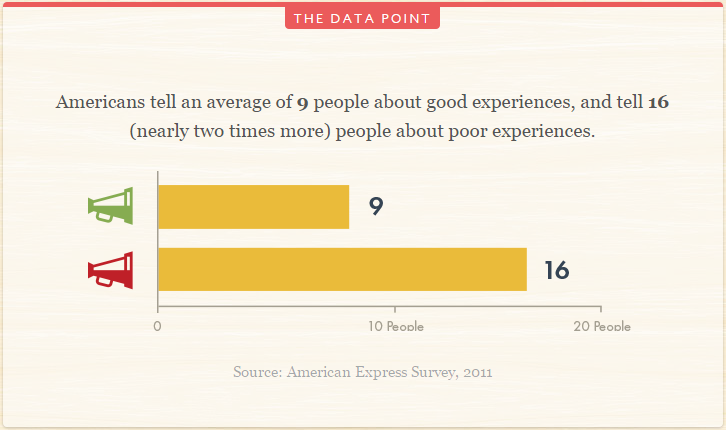




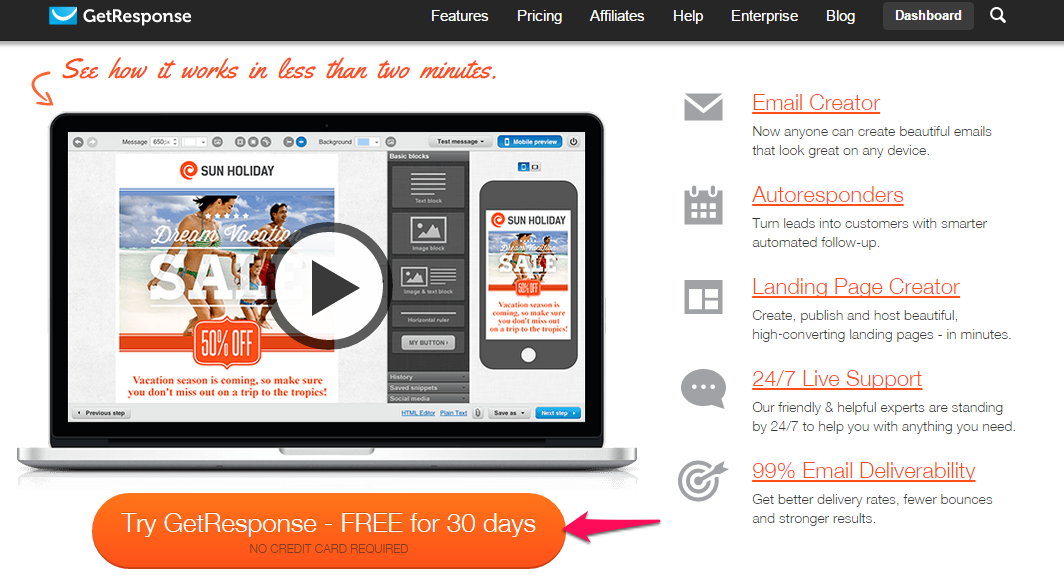




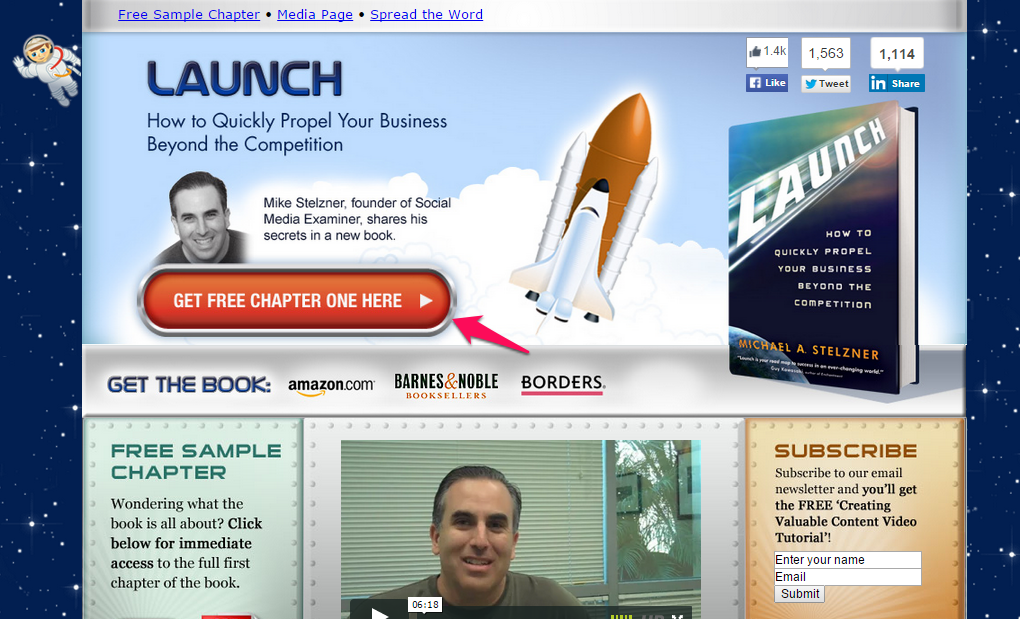







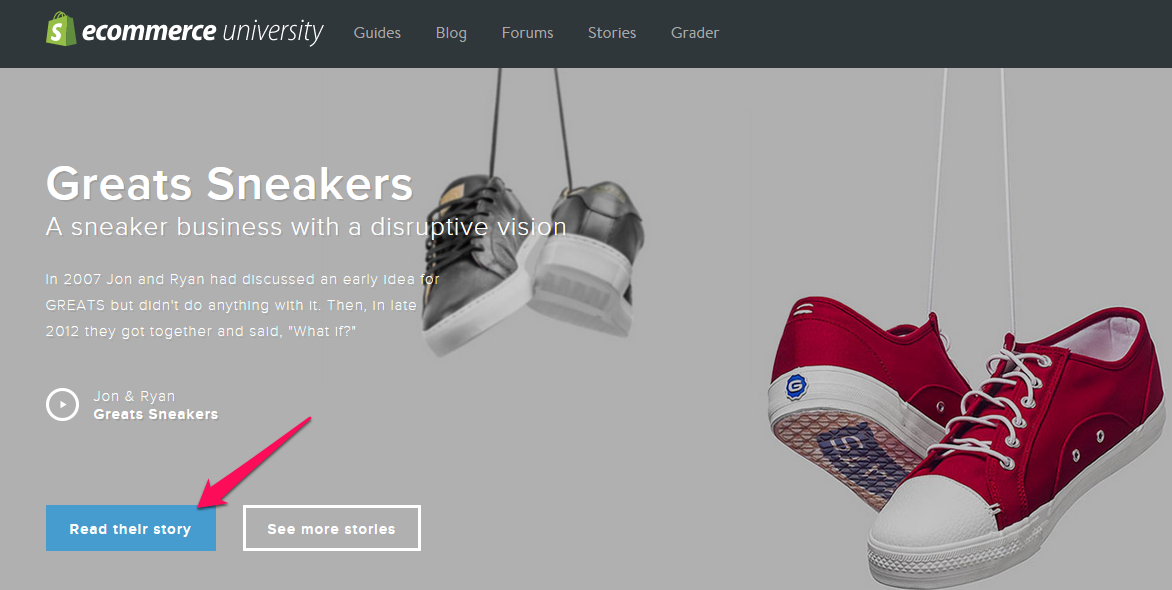

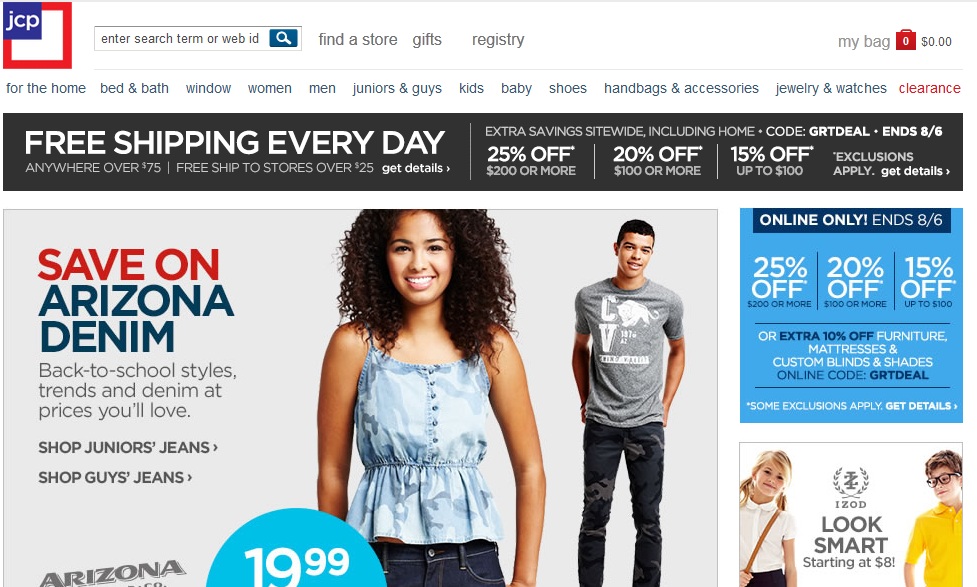









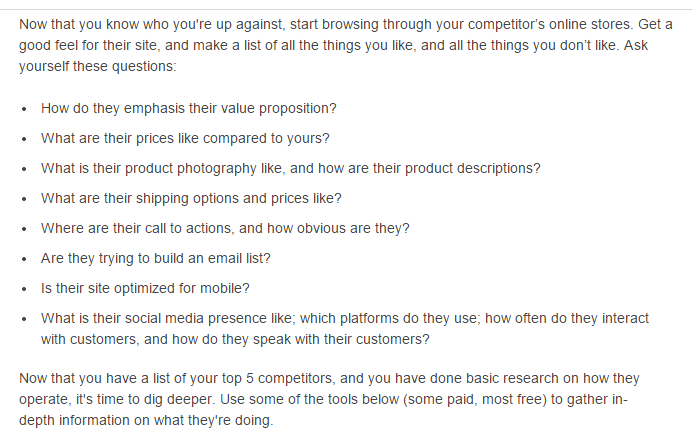



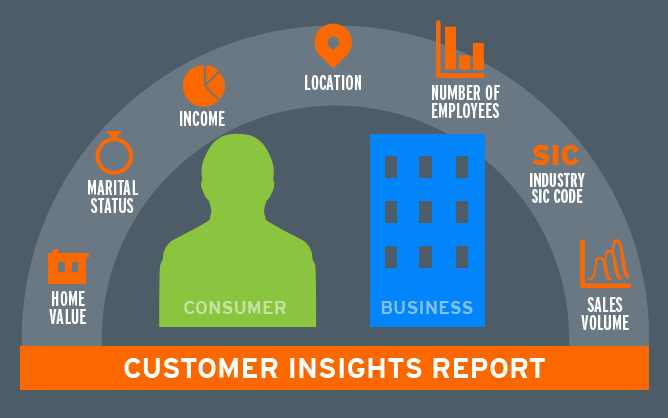


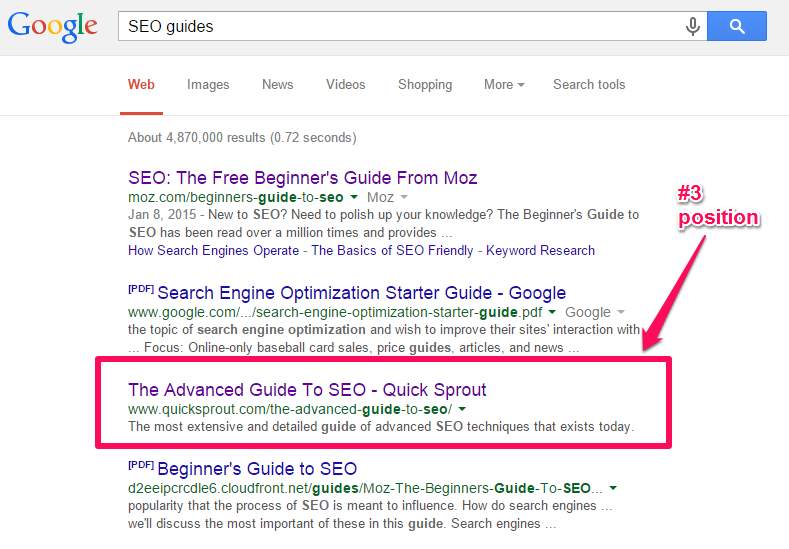


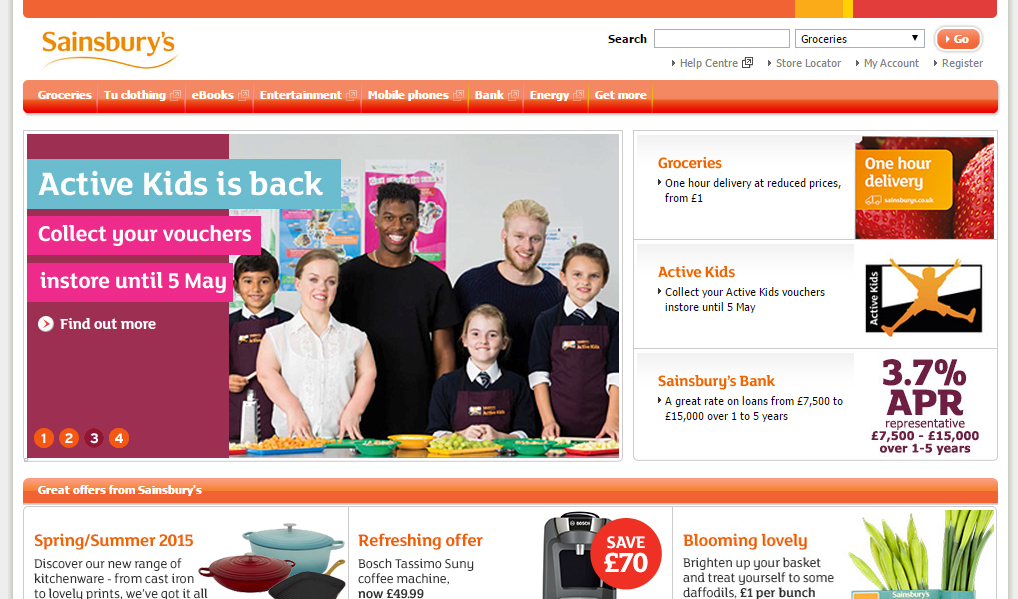










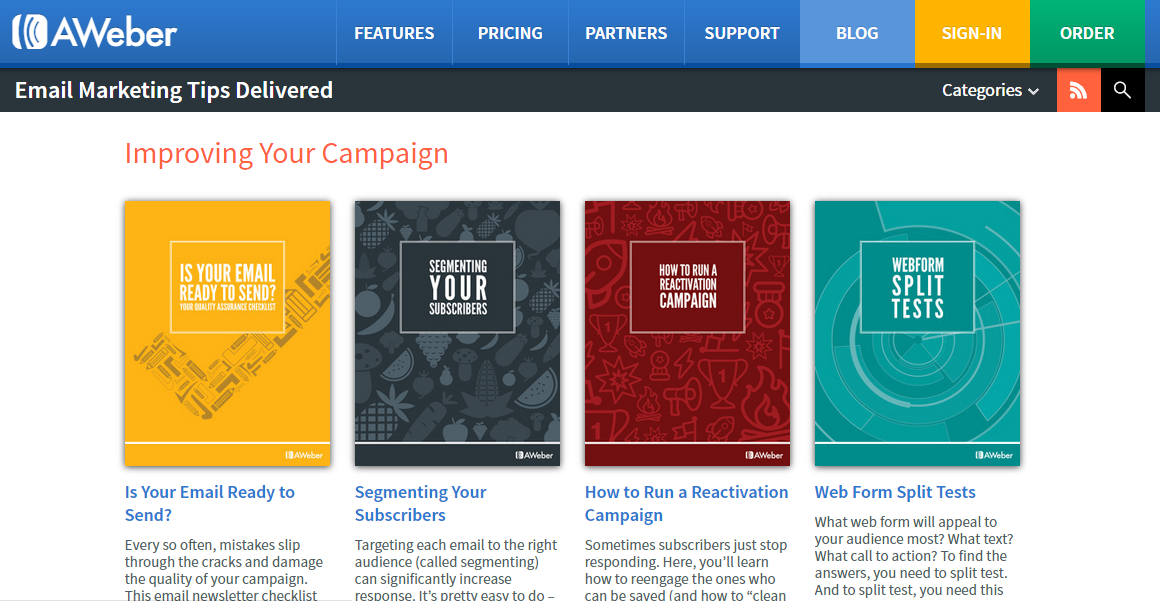



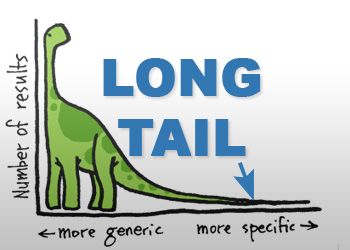
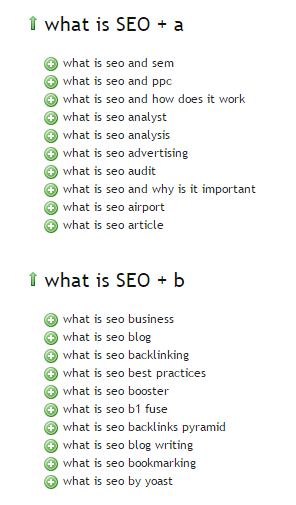



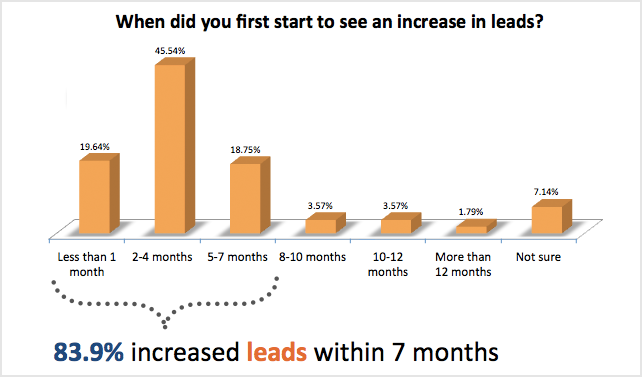

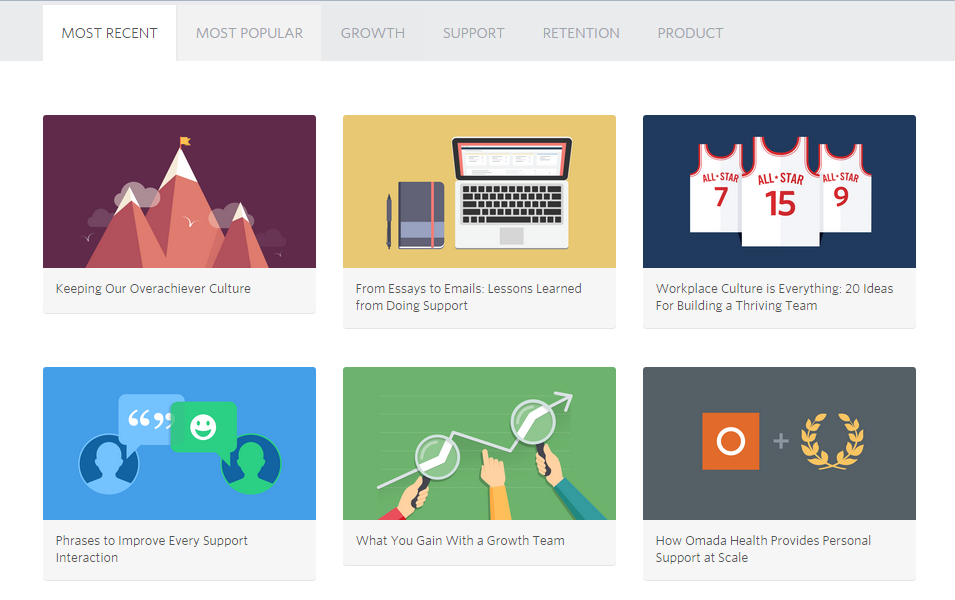


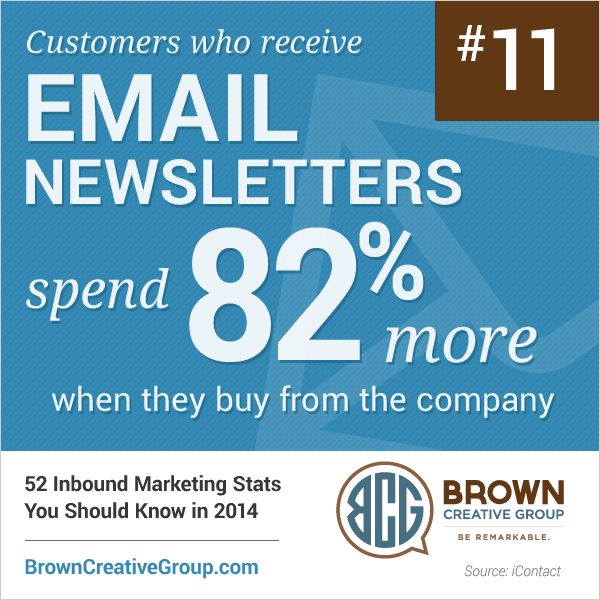

Comments (52)